- What is brand name bidding?
- Benefit 1: Send traffic to a post-click page
- Benefit 2: Gain more control
- Benefit 3: More information than organic listing
- Benefit 4: Maximize brand exposure
- Benefit 5: Defend against competitors
- Benefit 6: Cost-effective
- Disadvantage 1: It may not be necessary
- Disadvantage 2: Bumps down your organic position
- Disadvantage 3: Paying for non-buying searchers
- Instapage example: Connect ads to post-click pages
- Bidding example: LinkedIn
- Bidding example: Shopfiy
- Bidding example: Widen
- Conclusion: Take more control of your brand
When people search for a specific company online, that company’s ad often shows up in the search results, right above their organic listing. Doing that raises questions such as:
- Why should brands pay for ads for their own brand name?
- Does it make sense to pay when the person is already searching for you?
- Is it worth it if there’s already a good SEO strategy in place?
All very logical questions, so let’s take a look at the answers. Below are some of the pros and cons of bidding on your own name and search terms as part of your digital advertising strategy.
What is brand name bidding?
Brand name bidding refers to bidding on your own brand name as part of your PPC strategy. This way, when people search for your brand name — or include your brand name in their search query — your ads will show up at the top of the search results:
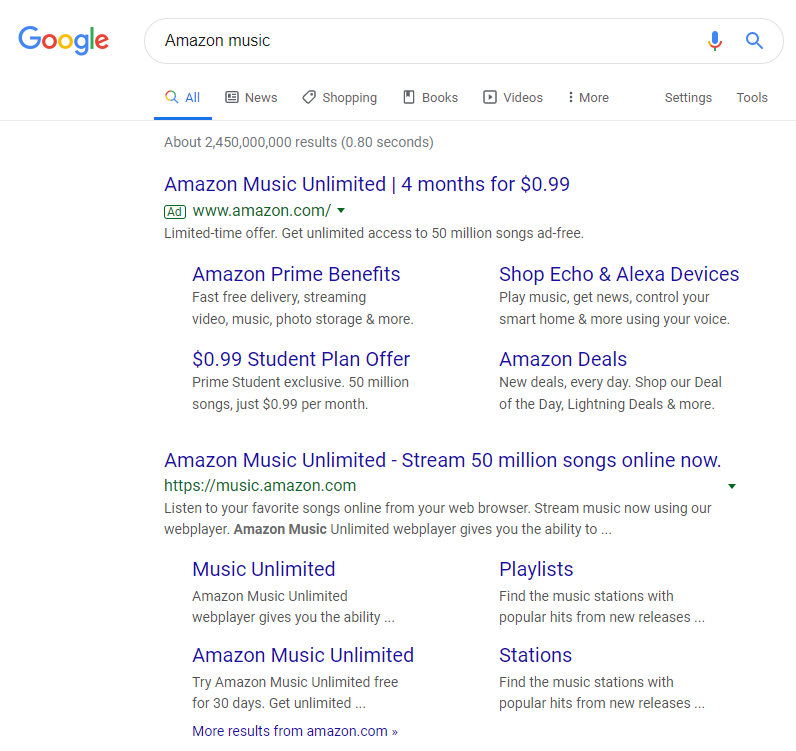
There are multiple reasons to implement this tactic, but also some downsides to recognize. Here’s a look at both, respectively.
What are the benefits of brand name bidding?
1. Send traffic to a dedicated post-click landing page
When someone searches your brand name and sees your organic listing, they’re likely sent to your homepage upon clicking. However, it’s likely that a searcher using your actual brand name is specifically looking for your organization because they’re close to the point of conversion. You must make sure you’re capturing those high-intent searchers who are further along in the buying cycle.
That’s the beauty of bidding on your own brand — you can run specific promotional campaigns and point traffic to dedicated pages that are relevant to those promotions. Rather than sending prospects to your homepage or product pages that aren’t designed for maximum conversions.
For example, say someone does a Google search for “Workato vs. Tray:”
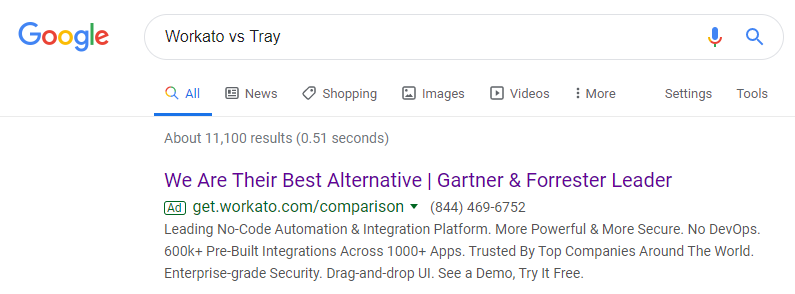
By bidding on their own brand name and running a complete campaign, Workato can send their prospects to a well-designed comparison landing page for maximum conversions:
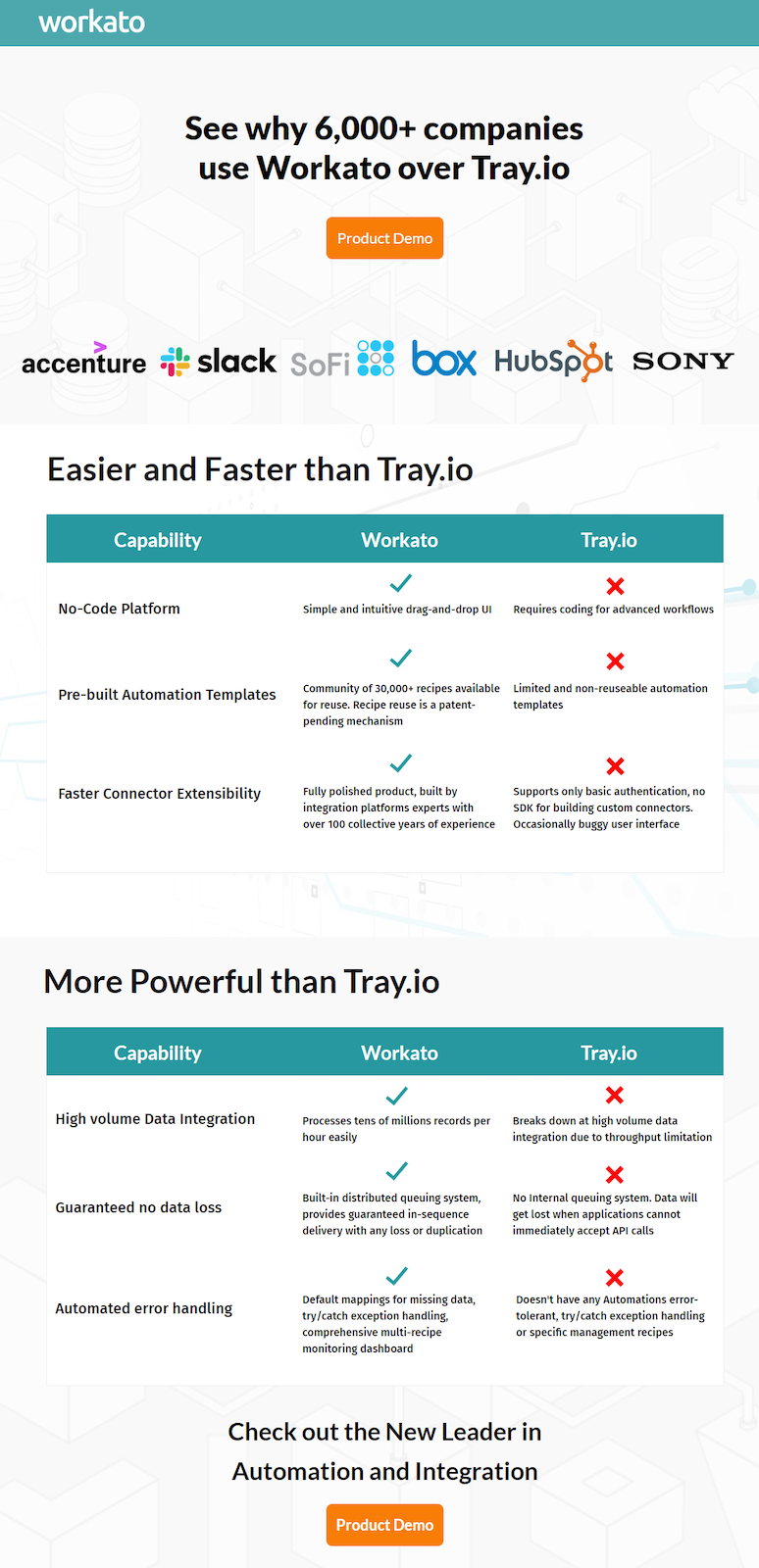
2. Gain more control
By bidding on your own brand, you have more influence on what the search results look like. With organic SERP listings, you can optimize your title, description, and other meta tags for higher ranking and better click-through rate. But with paid search ads, you have more control than that.
Brand name bidding allows you to fully control the message that you’re communicating to users and that represents your brand. For instance, you can:
- Highlight a current promotion
- Include a specific call-to-action
- Add exceptional detail
What’s more, you can change your ad message whenever you want. If you want to change the title or description of an organic listing, it could take several days to take effect. Changing a paid ad, however, is instant, and you can even use ad scheduling to specify certain hours and/or days of the week you want your ads to show.
Discover what messaging resonates best with your audience by running branded A/B tests with your ad copy. You can also A/B test your post-click landing pages to see what elements, designs, etc. generate the highest conversion rates.
3. Provide users with more information than organic listings
Google allows advertisers to add many customizable ad extensions — sitelinks, structured snippets, and promotions — to their ads to enhance them and provide users with more information:
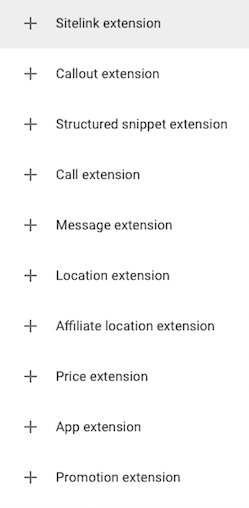
As a rule of thumb, you should create 50%-100% more ad extensions than you actually need, because Google automatically selects the most relevant ones to appear, based on additional criteria like where the brand search originated from, the device type used, and the keywords entered.
4. Maximize brand exposure on the SERP
Why settle with ranking first when you could rank first and second with both paid and organic search results?
Bidding on your branded keywords and company name allows you to dominate the top of the search result page by showing more listings, and taking up more real estate. And when you consider the number of people that typically interact with search results above the fold, capitalizing on that real estate becomes a vital part of your PPC strategy.
Not only that, but owning as much real estate as possible between PPC ads, organic listings, the knowledge panel, social media, etc., sets you apart as an authority — and authority means credibility and trust, which ultimately leads to clicks.
Look how Adidas does it:
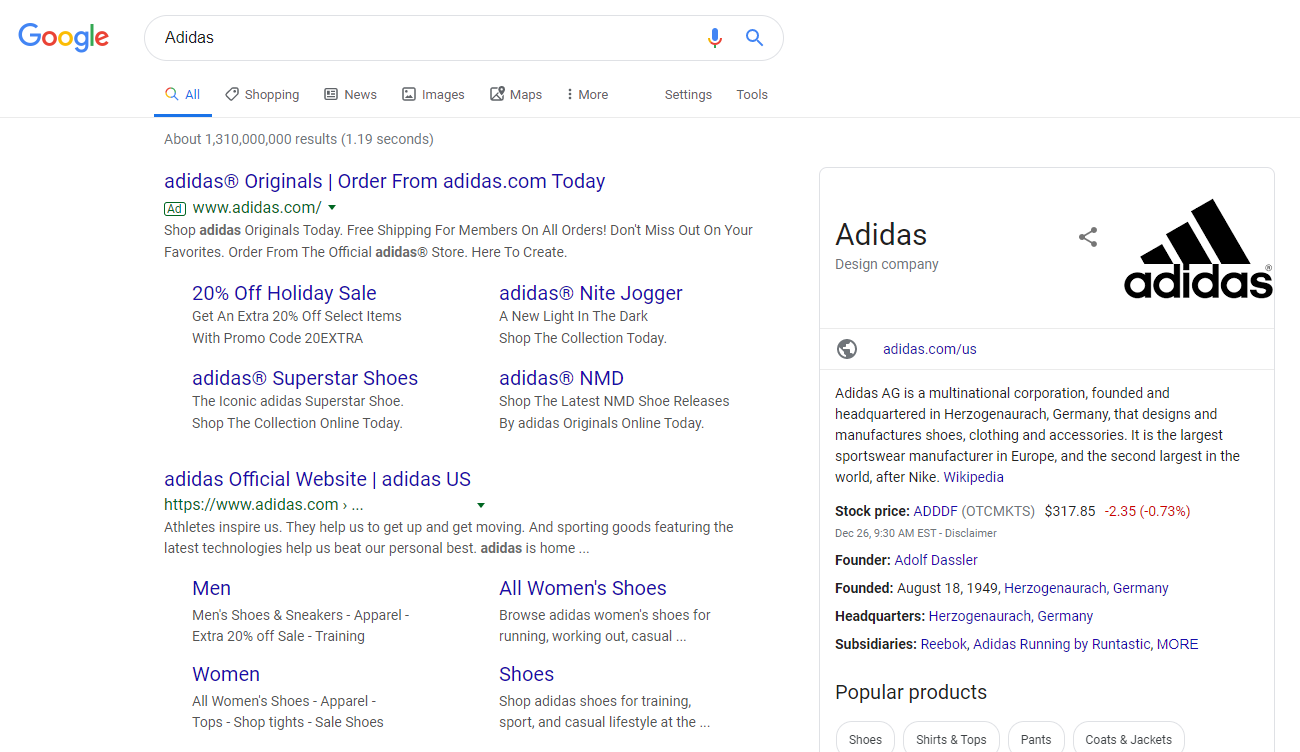
Combined with the knowledge panel on the right side and the organic result at the bottom, the ad at the top is contributing to Adidas dominating the top of page one.
In addition, consider how high review and news websites can rank, and how you may also have competitors bidding on your brand name. By achieving brand SERP domination, you can avoid the risk of having any negative reviews, news, or competitor’s ads shown above your brand listings.
5. Defend against your competitors
You should always check to see if someone is bidding on your brand name, because the last thing you want is for a potential customer who is already further along in the buying cycle to search for your brand name, see your competitor’s ad above your organic result, and decide to redeem their offer instead of yours:
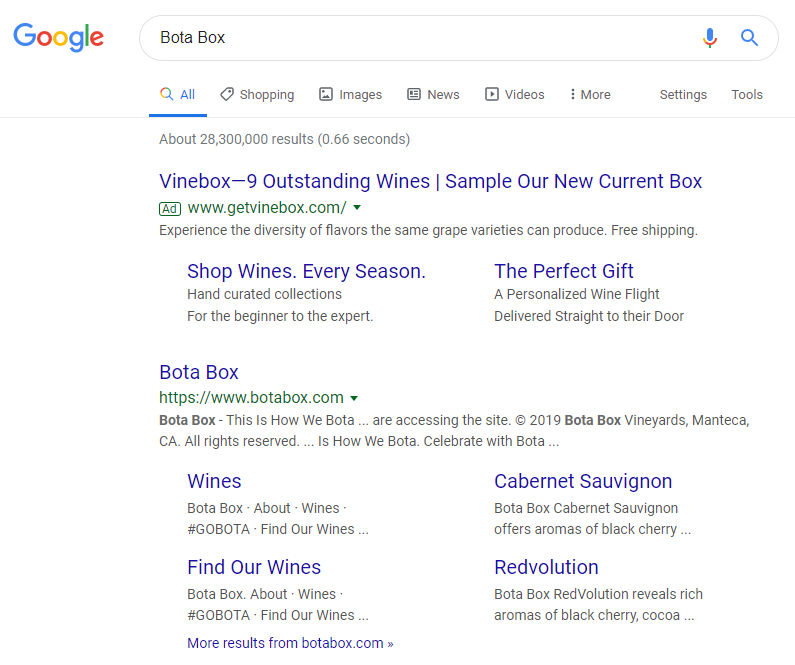
Bidding on your name can be used as a defensive strategy to prevent this from happening.
If competitors bid on your branded terms or name, you can raise their costs simply by bidding on your own name. It’s likely that your ad will have a better position, higher CTR, and better Quality Score. As a result, you’ll lower their ad position, reduce their traffic, lower their conversion rates, and increase their CPA — all because they have to increase their bids to compete for the same ad slot.
Bottom line, if you don’t bid on your brand terms or name, you make it cheaper and easier for your competitors to outrank you and steal your customers.
6. It can be cost-effective
Branded keywords are typically much more cost-effective than non-branded keywords due to less competition. Plus, even if a competitor brand is bidding on your organization’s name, you still automatically have an advantage due to an incredibly relevant post-click page. Since Quality Score is determined by this, expected CTR, and ad relevance, your bid prices remain relatively low:
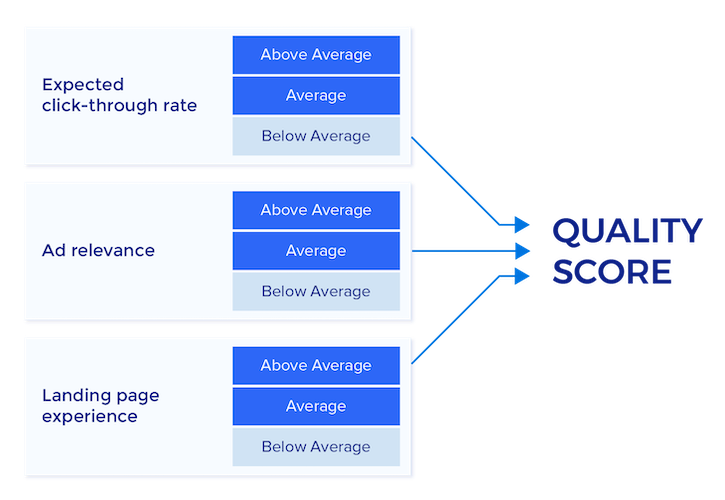
Aaron Levy from Tinuity says to be careful though:

Yes, but not on every brand term, and not for every impression. Aiming for 100% impression share on core branded terms is a fools errand. While the days of penny CPCs on branded terms are gone, there are still affordable clicks to be had for high-intent searches.
But, advertisers often forget the cost of the “next click” is not the same as the last. Say you currently have 90% impression share at a $0.50 CPC. You want more impression share and achieve 95% the next week at a $0.60 CPC. Guess what? Each of those “new” clicks didn’t cost you $0.60 cents, they cost you $2.40, while the “old” clicks still cost $0.50.
A sound brand strategy is focused on incrementality. That is, what proportion of your brand clicks and conversions would have happened regardless. There’s a myriad of studies proving incrementality of brand bidding (usually ranging between 20-50%) and Google’s more than happy to do a brand lift study for you. I won’t reinvent the wheel, but will encourage you to test for yourself to find out how much branded PPC is worth to your business.
At the end of the day, when you’re dealing with a branded search, no other post-click landing page is more relevant to your ad than your own. This means you’re pretty much guaranteed to win the keyword auction for the least amount of budget while claiming the #1 ad position.
What are the disadvantages of brand bidding?
1. It may not be necessary
If there aren’t any competitors bidding on your brand name, and you already rank well organically, there may be no need to run a branded campaign. If you already rank #1 for your name and dominate the search results page like Best Buy below, then why pay for clicks you usually get for free?
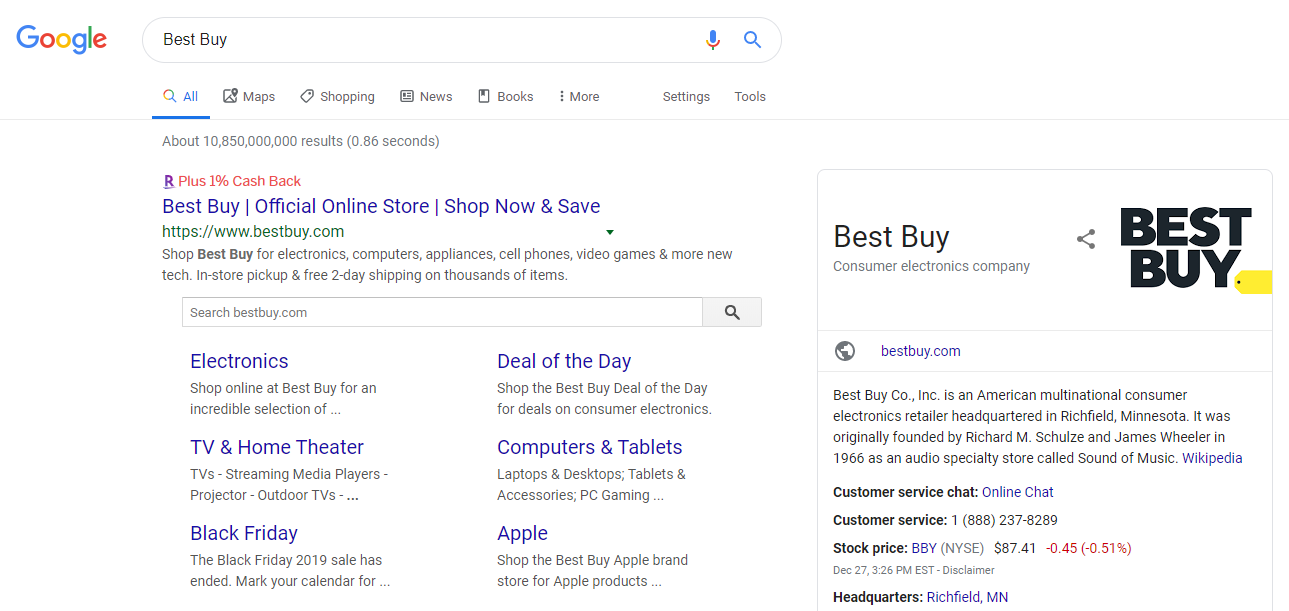
In this case, Best Buy would be spending unnecessary ad budget on branded keywords when that money could be used elsewhere.
Max Serrato, PPC Specialist at Directive elaborates:

If you rank well organically for your own branded terms, and competitors are not bidding on your brand name, you’re spending money when you do not really need to and overshadowing your organic metrics. If competitors are bidding on your brand name, you may want to bid here, or you could lose traffic/conversions to the competition. If you don’t rank for your brand name organically, you definitely want to bid on your brand name otherwise users will likely not be able to find you.
2. It bumps down your organic position
Google reserves up to 4 positions at the top of the SERP — and as mentioned above in a positive light, Google Ads bump organic listings down the page.
However, this can also be a downfall if your brand has a solid organic SEO strategy, and you already rank as one of the top organic results.
This is especially true on mobile where there’s less screen space/visibility without scrolling.
3. You could be paying for non-buying searches
When your ad appears at the top of the search results, the chance of people clicking it for non-buying purposes increases. This includes existing customers searching for your contact details, people looking for jobs, salespeople looking to prospect, and more.
All of those clicks from people not looking to buy your products or services can add up to a fairly sizeable chunk of your daily ad budget, and never even lead to a sale.
Connect your branded search ad to a relevant post-click page
If you do advertise on your brand name, be sure to send people to a dedicated post-click landing page rather than your homepage or product page. As evidenced by the recent Instapage experiment below, this generates better results.
In the experiment’s control, when prospects searched for “Instapage”, they saw an ad with the phrase “Official Site” indicating that clicking the ad would take them to the Instapage website homepage:

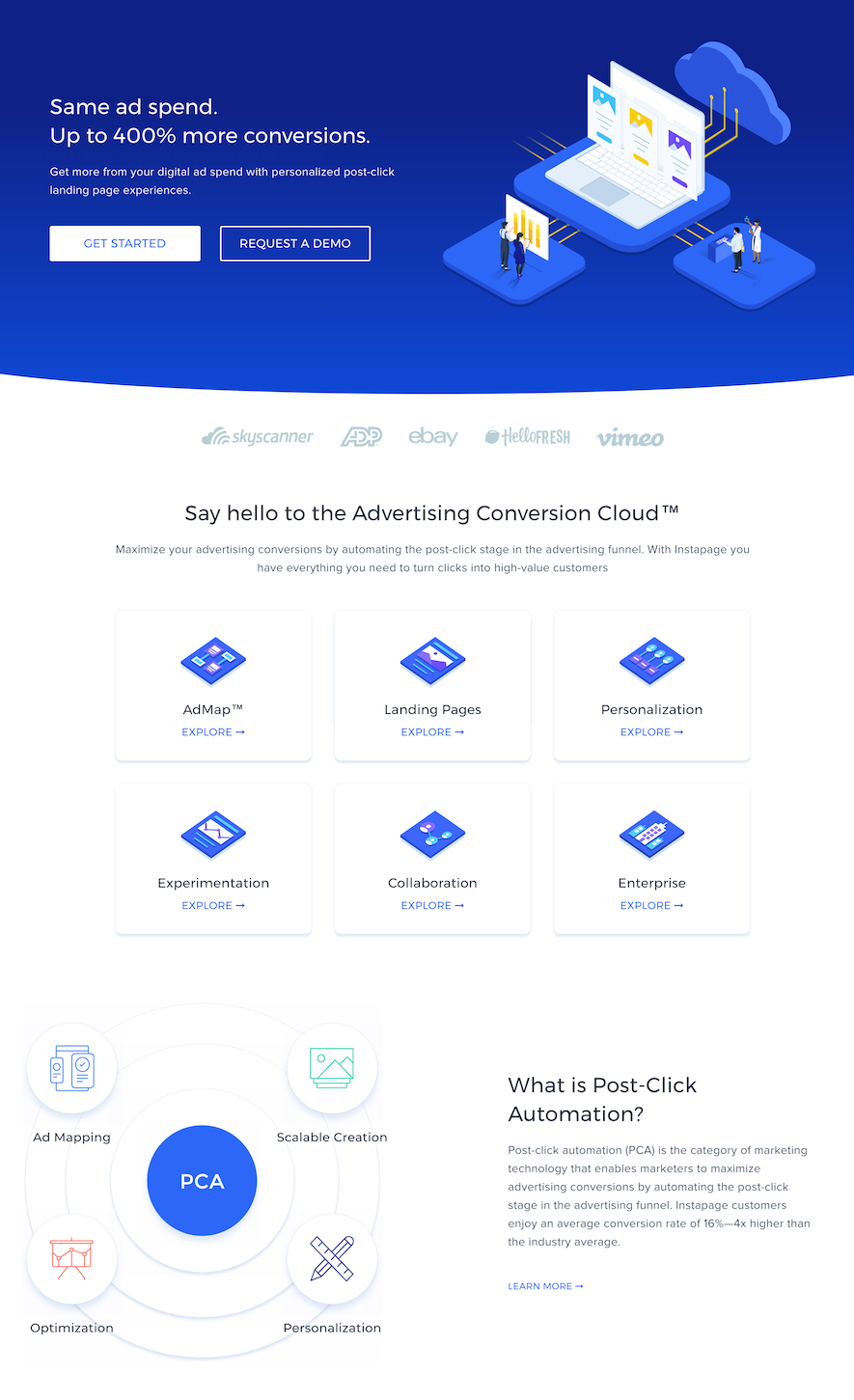
Similar to other homepages, the Instapage homepage is meant to be a browsing experience for people to learn about the company, so it includes:
- Every major product offering with outbound links
- Numerous navigation links in the header and footer that take visitors to different pages on the website
- Multiple different CTAs: Free Trial (“Get Started”) and Enterprise Demo
In the variation, when prospects searched for “Instapage,” they saw this ad with no mention of the official site or homepage:

Here, the headline features a statistic promising prospects up to 400% more conversions with the platform, and clicking the ad takes prospects to the following dedicated post-click page:
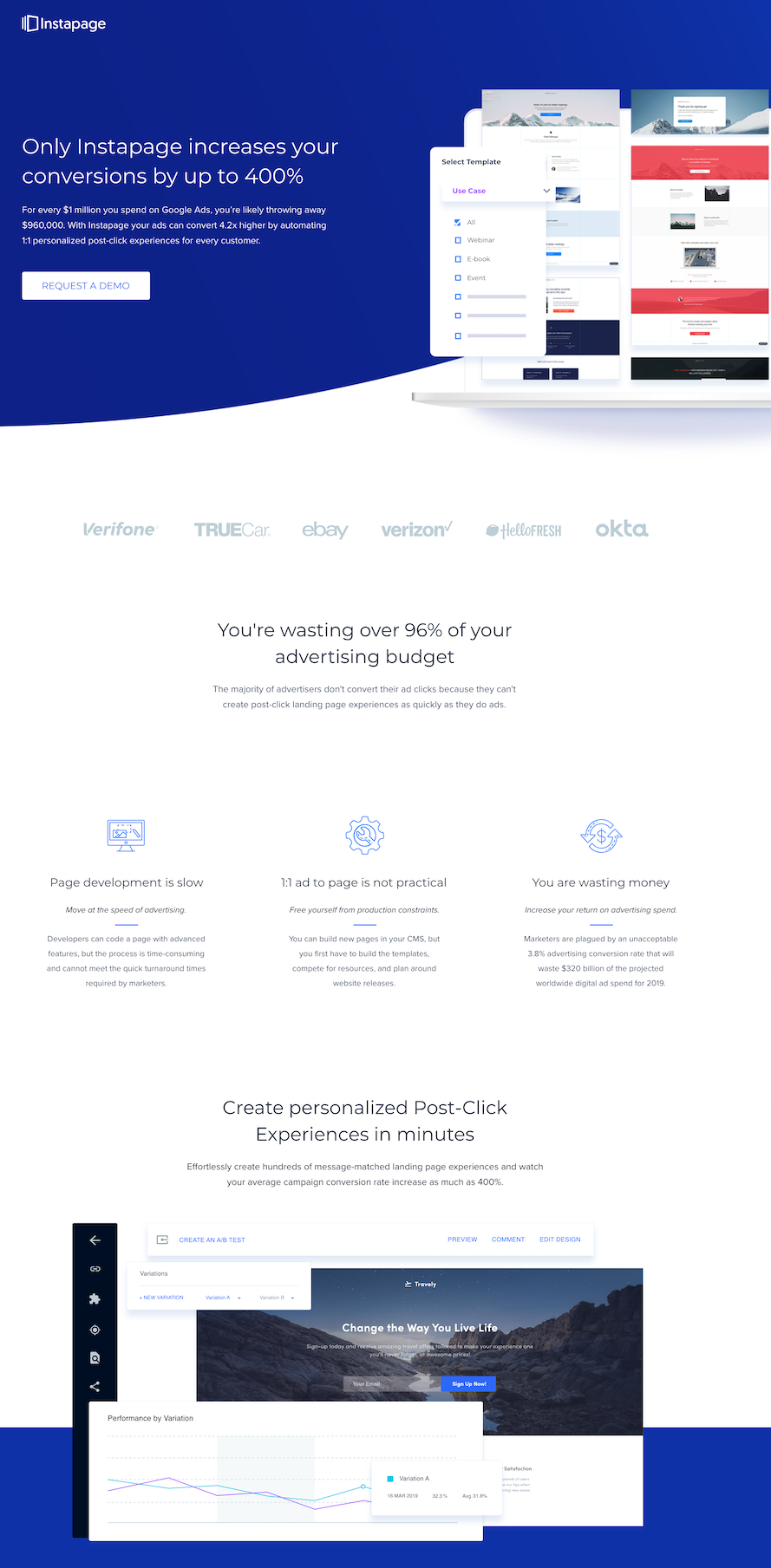
What sets this post-click landing page apart from the homepage experience is that:
- Only one main offer is promoted here — the “demo request” — without any distracting navigation links
- The compelling statistic from the ad is immediately reinforced in the post-click page headline
As a result, the post-click landing page campaign generated:
- Nearly 3x the conversion rate (despite a lower CTR)
- More than double the total conversions
- Lower CPC (total spend on the dedicated page was $800 less)
- About ⅓ less cost per conversion
Let’s take a look at three other companies who are bidding on themselves and connecting their ads to dedicated post-click page experiences.
3 Examples of optimized brand name bidding
1. LinkedIn
We can see that LinkedIn advertises on their own name with the search phrase “LinkedIn Business:”
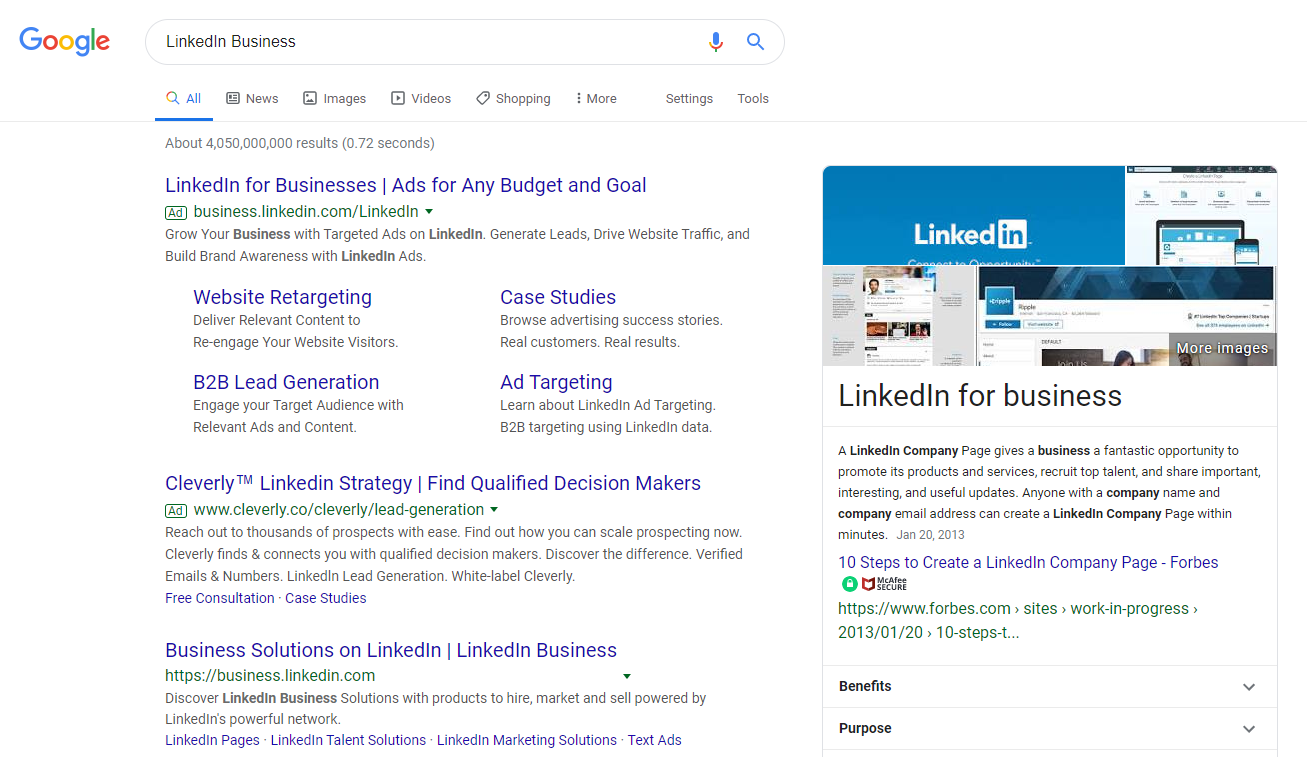
- Cleverly also bids on LinkedIn’s keywords, but LinkedIn still ranks first.
- LinkedIn brand awareness is maximized since they’re featured in the first ad position, first organic position, and knowledge panel.
- A UVP is highlighted in the ad headline (“ads for any budget and goal”), while the organic link headline is generic, without mentioning a UVP.
- Multiple sitelink extensions provide users with more information about the additional pages they can visit on LinkedIn’s website.
- Prospects visit a dedicated post-click landing page upon clicking the ad’s main headline:
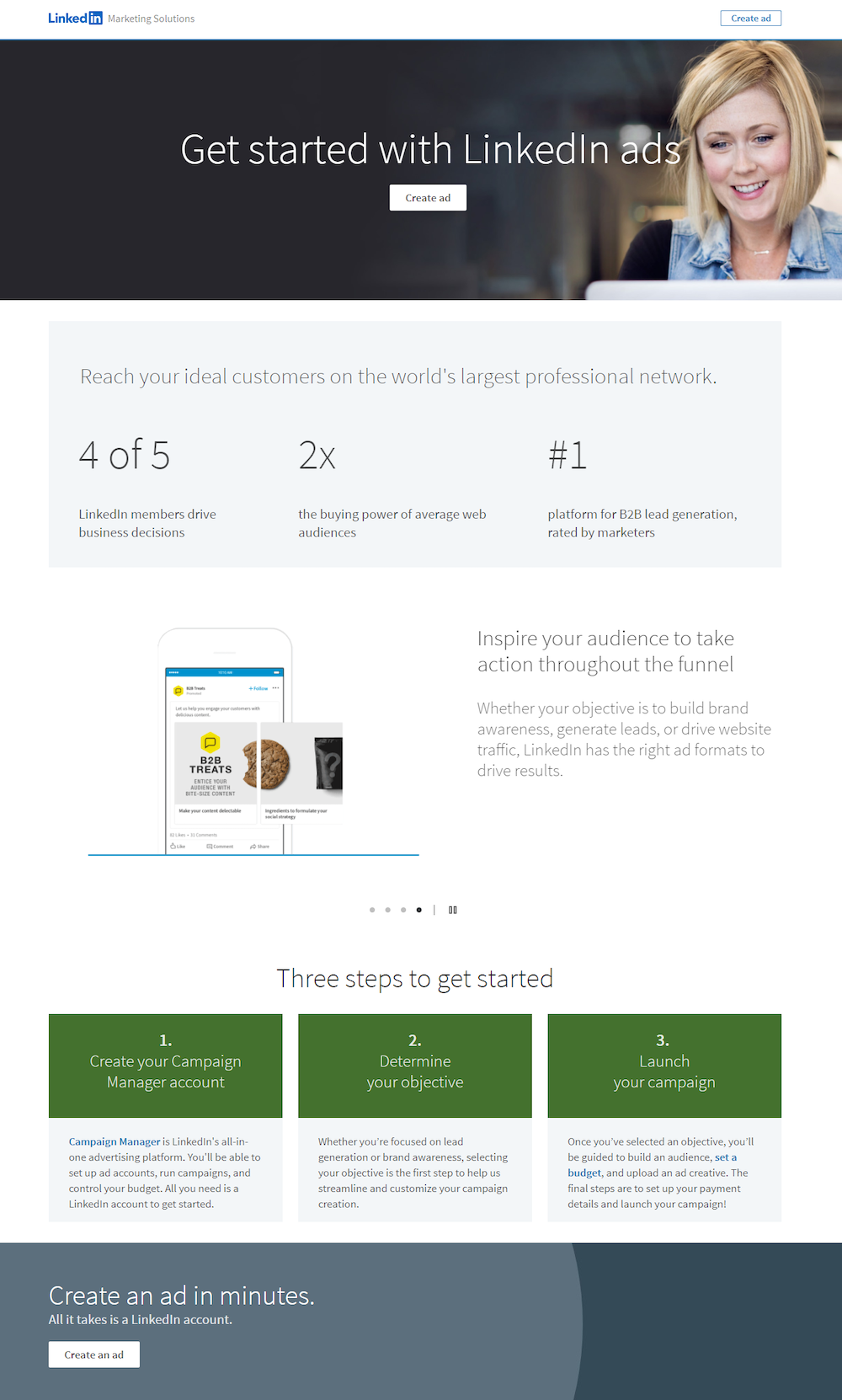
2. Shopify
Compared to the previous example, we see a lot more competitors’ names appear in the ad results with a search for Shopify:

- Three other companies also bid on Shopify’s brand name, and although there’s likely a bidding war happening behind the scenes (Shopify’s ad also appears with a search for BigCommerce), Shopify still ranks first.
- Shopify dominates a majority of the SERP because they have the top ad position, first organic position, and knowledge panel.
- The ad promotes a specific offer (free trial), while the organic link is extremely vague.
- A dedicated post-click landing page is attached to the ad, where visitors can sign up for a free trial:
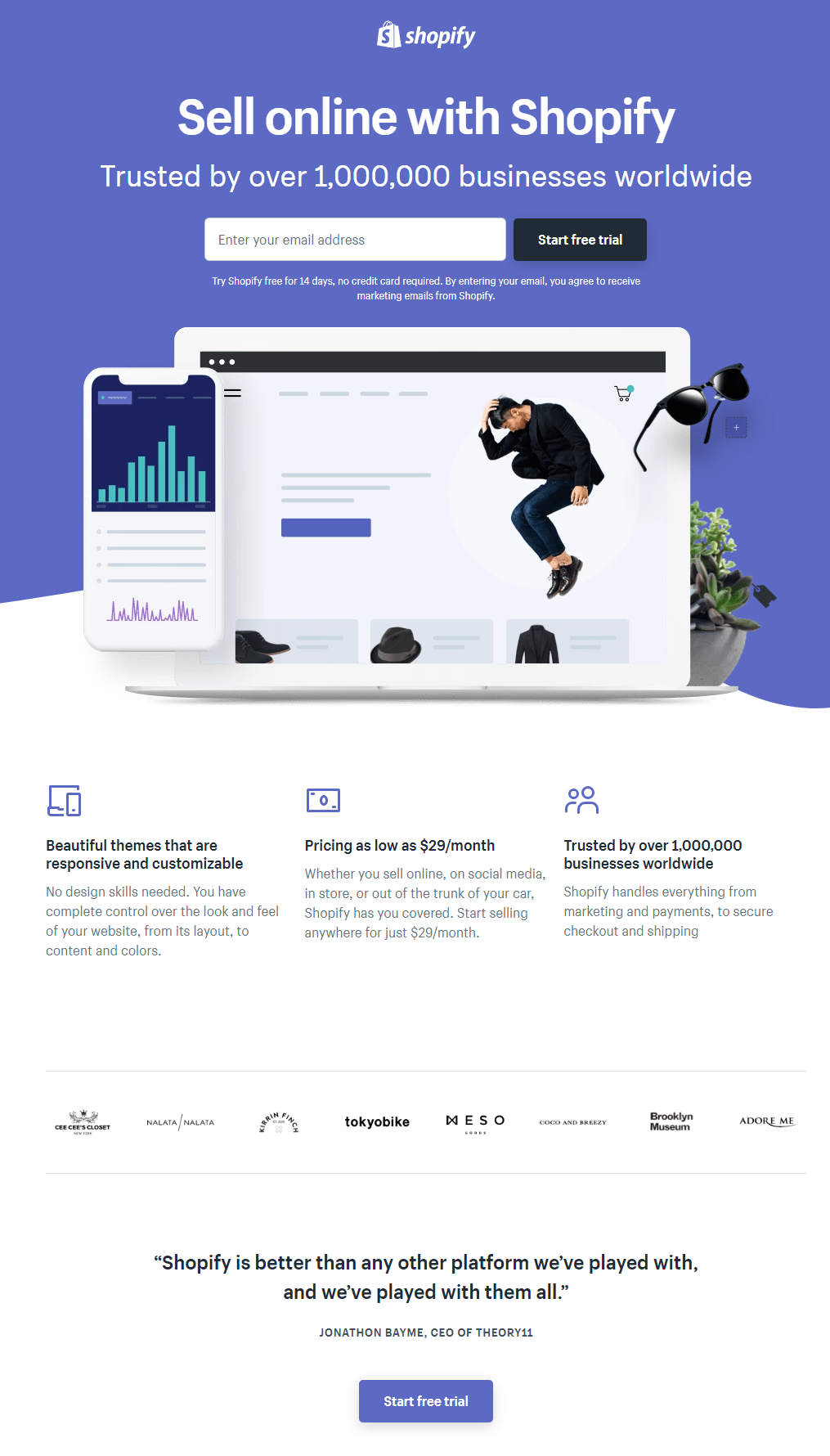
3. Widen
A Google search for “Widen software” showed this branded ad campaign:
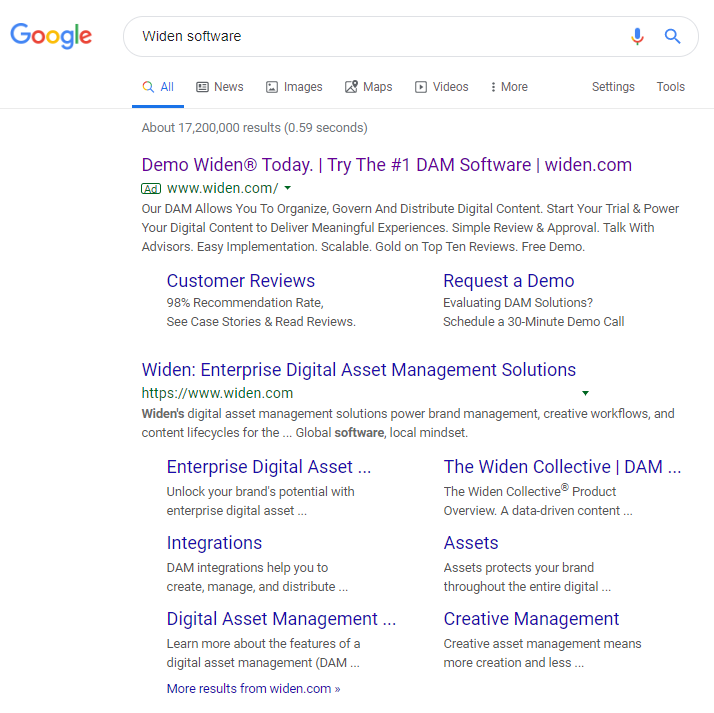
- Widen dominates the SERP because they bid on their own search terms, no competitors are bidding on the same ones, and they rank in the first organic position.
- A specific promotion is offered through the ad (a Widen software demo) — along with a UVP (the #1 DAM software), compared to the generic organic listing that leads to the Widen homepage.
- Sitelink extensions provide searchers with more information and additional pages to visit on Widen’s website.
- Relevant post-click landing pages are delivered through the ad’s main headline and the “Request a Demo” extension:
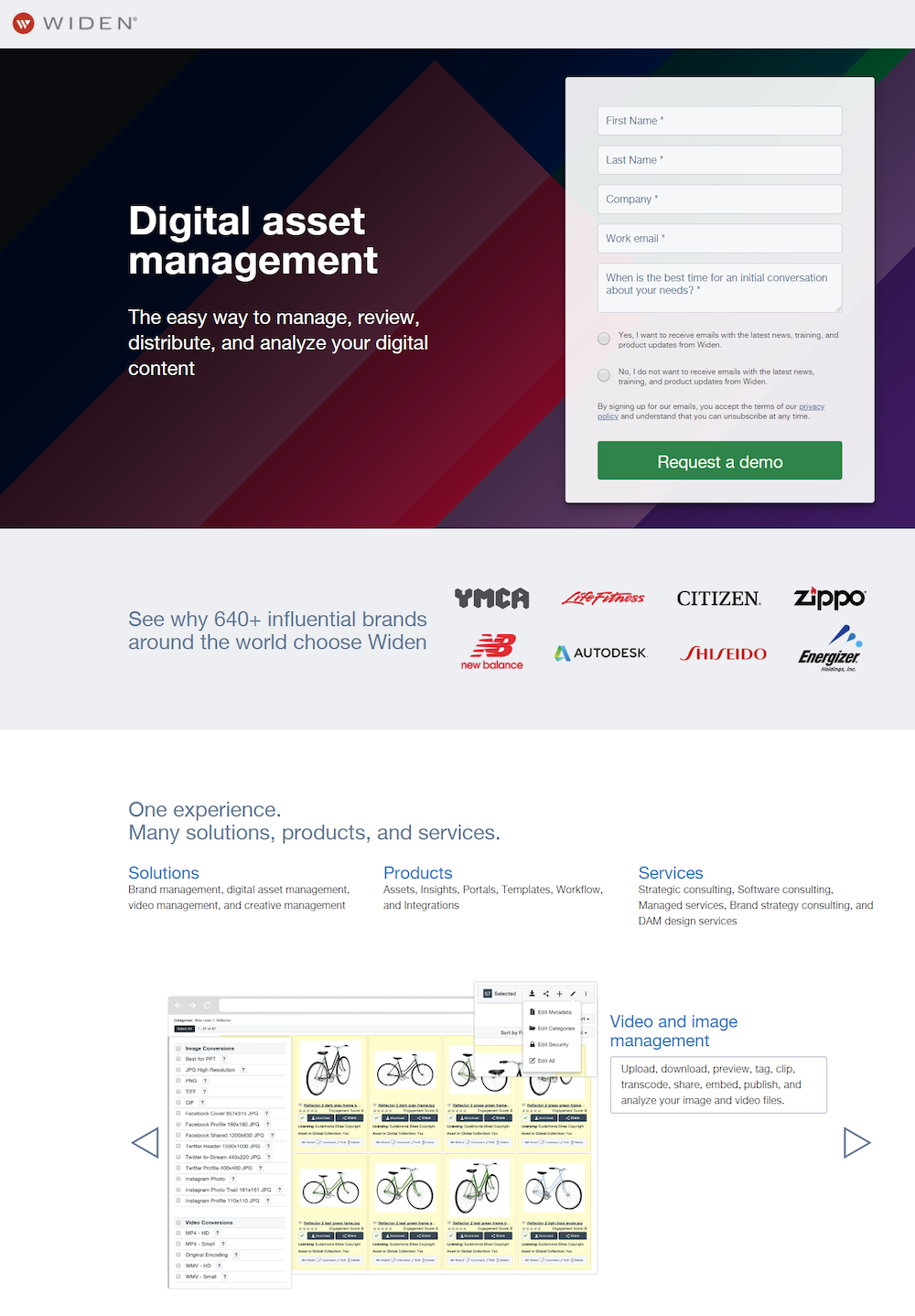
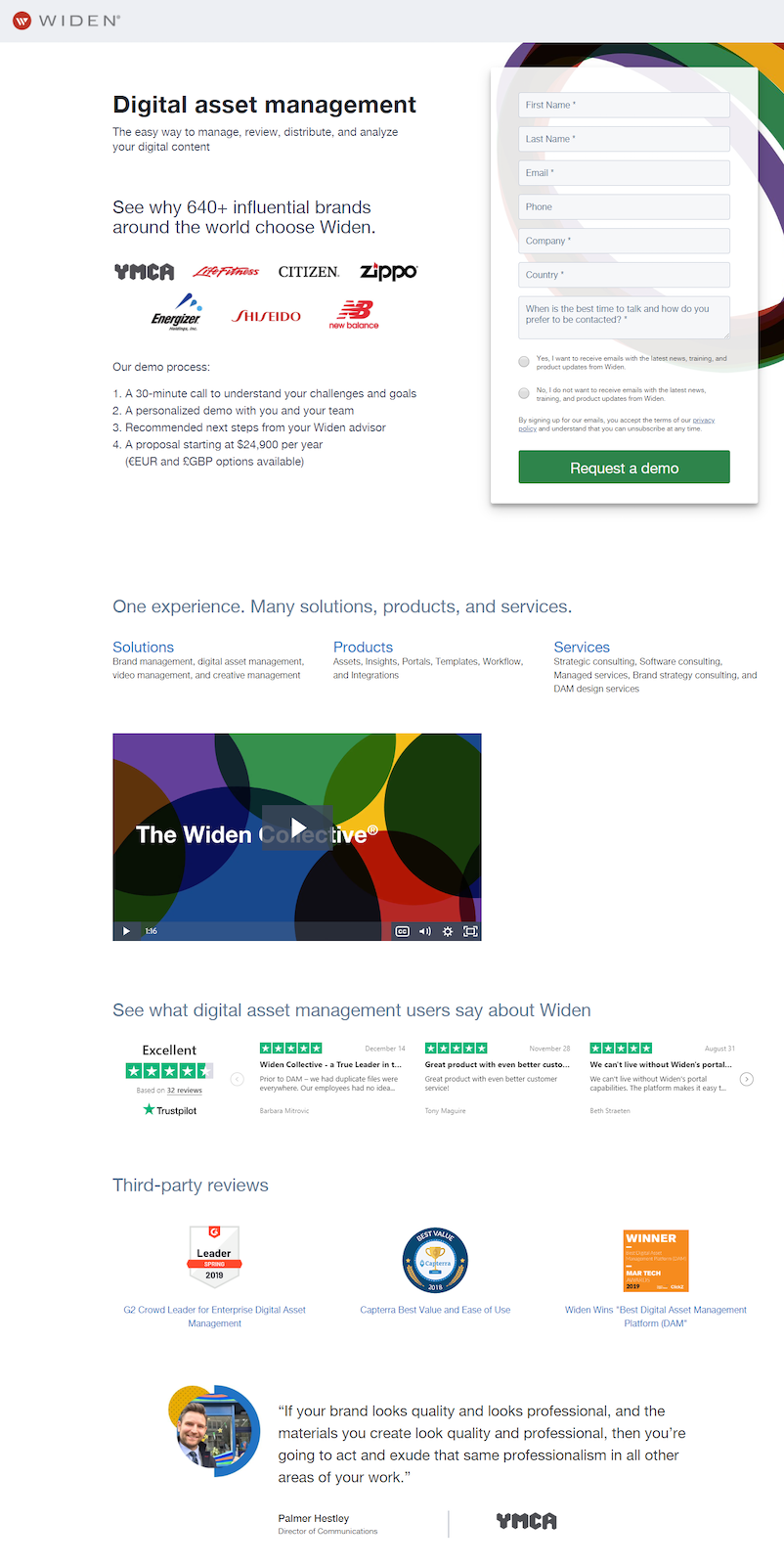
Take more control with brand name bidding
Since brand name bidding gives you more control over your brand in the SERP, helps you defend against competitors, and is cost-effective — it’s a no brainer for most businesses. If you’re not sold on the idea yet, experiment with your own brand bidding to see if branded PPC ads drive lower CPC, more conversions, and higher ROI for your business.
No matter what you decide, be sure to connect all your PPC ads (branded or not) to relevant post-click landing pages that tell the same story as your ads. Request an Instapage Enterprise Demo to learn how to build personalized, high-converting post-click pages at scale.

See the Instapage Enterprise Plan in Action.
Demo includes AdMap™, Personalization, AMP,
Global Blocks, heatmaps & more.
